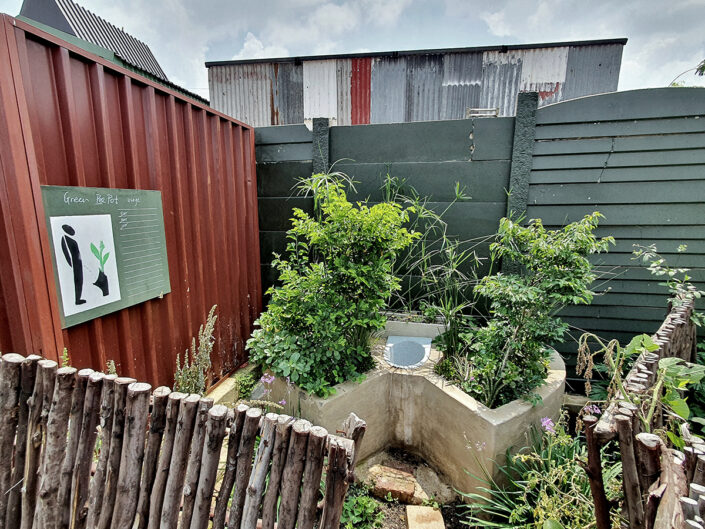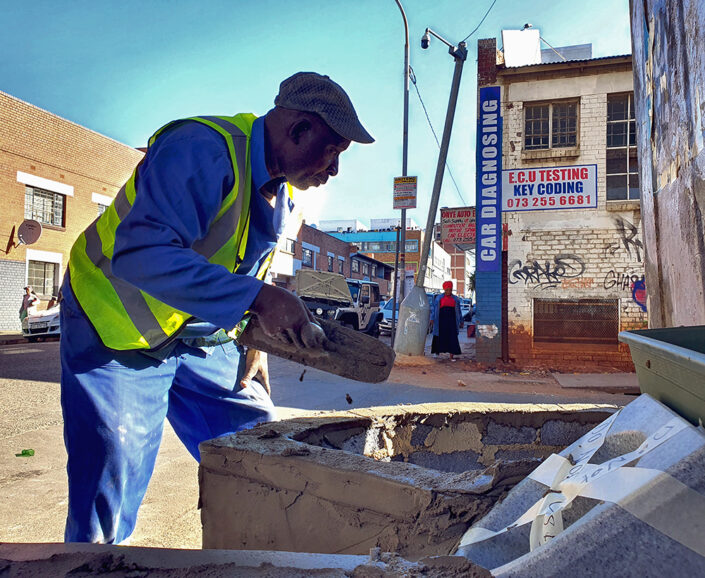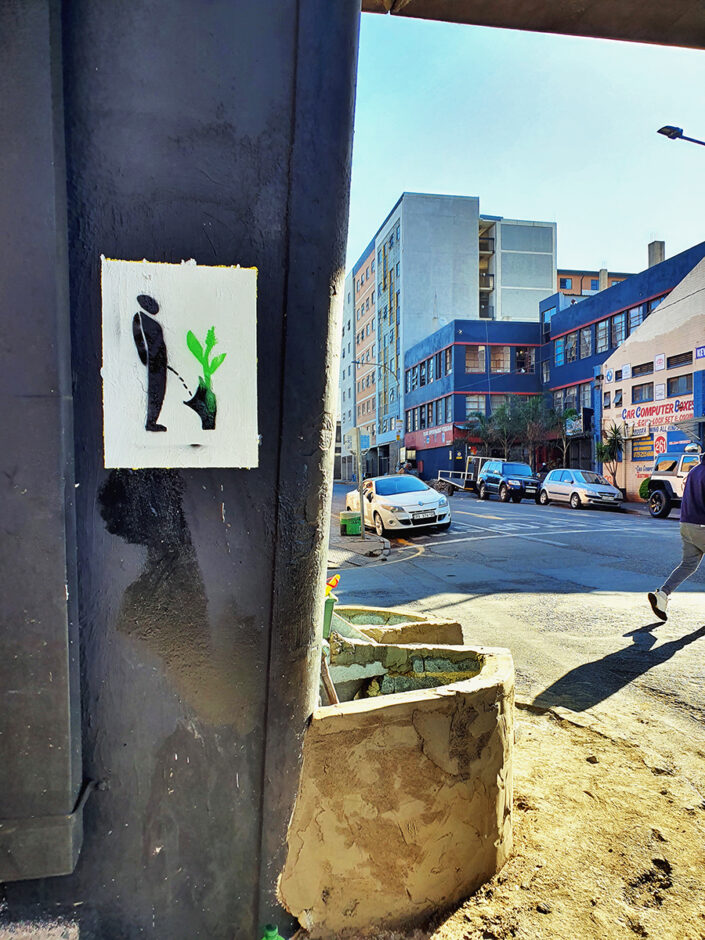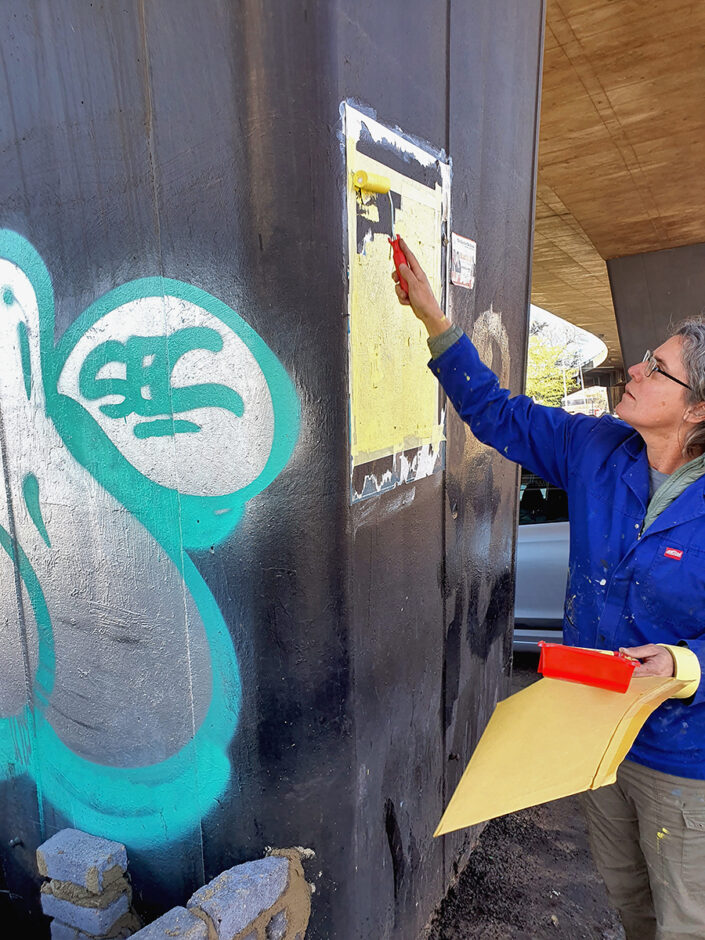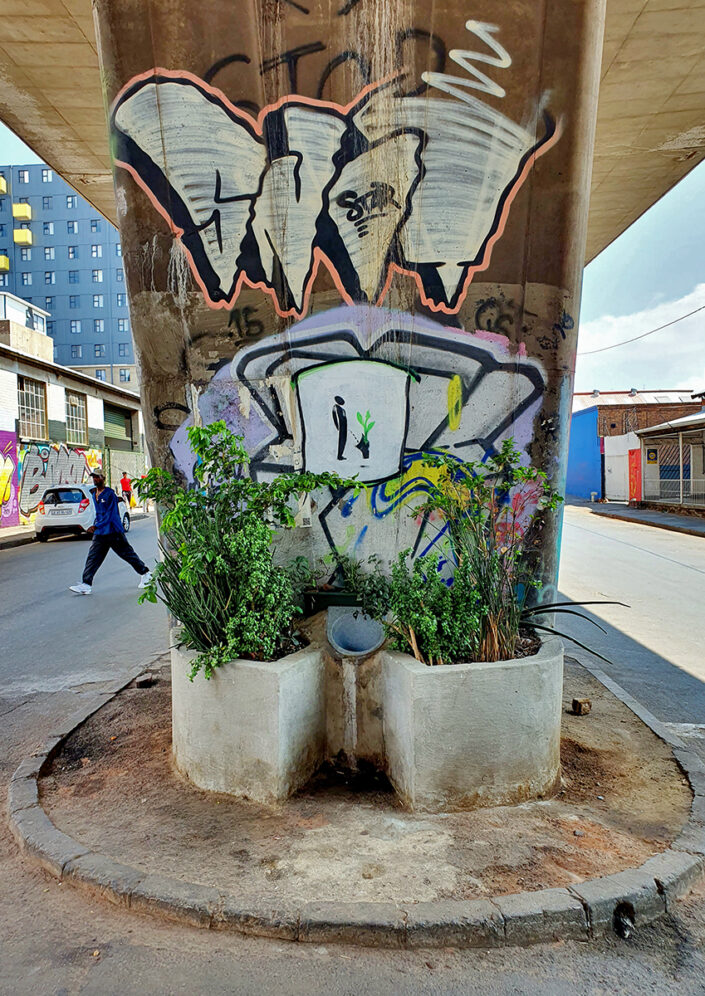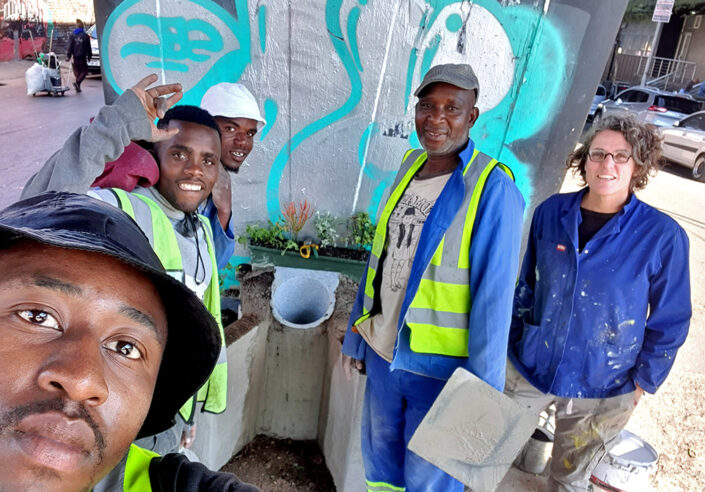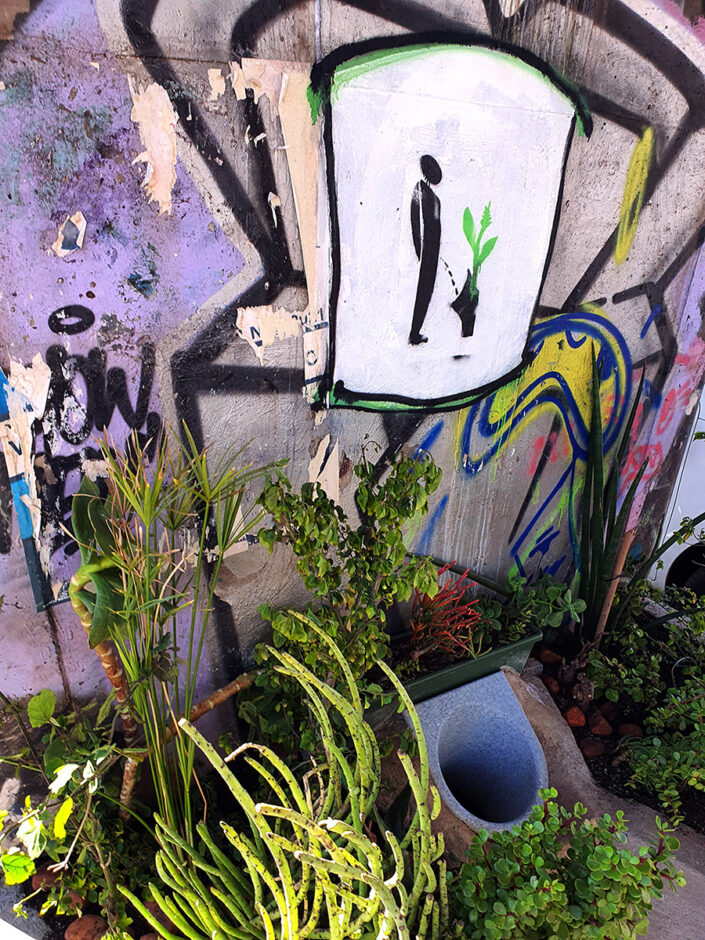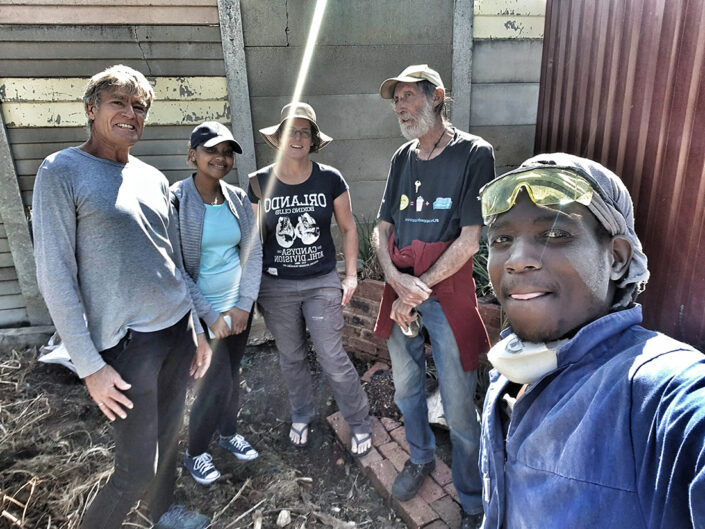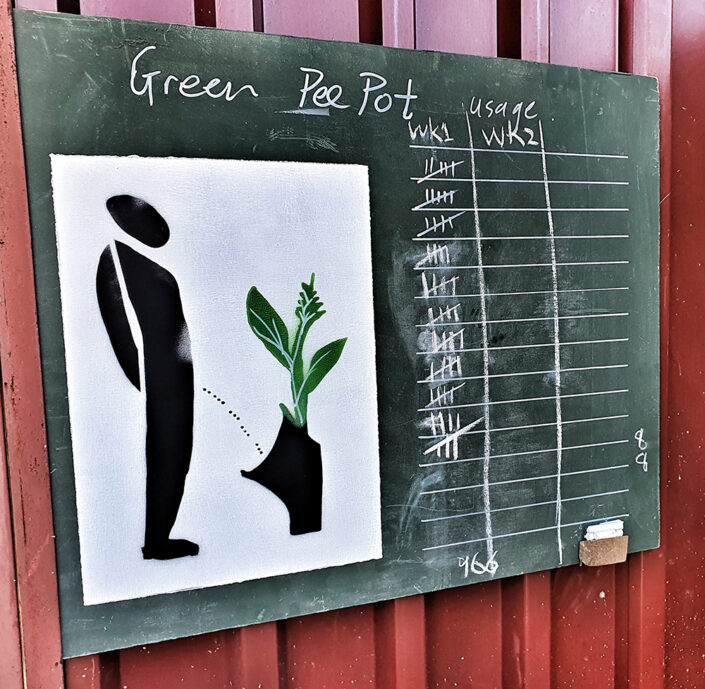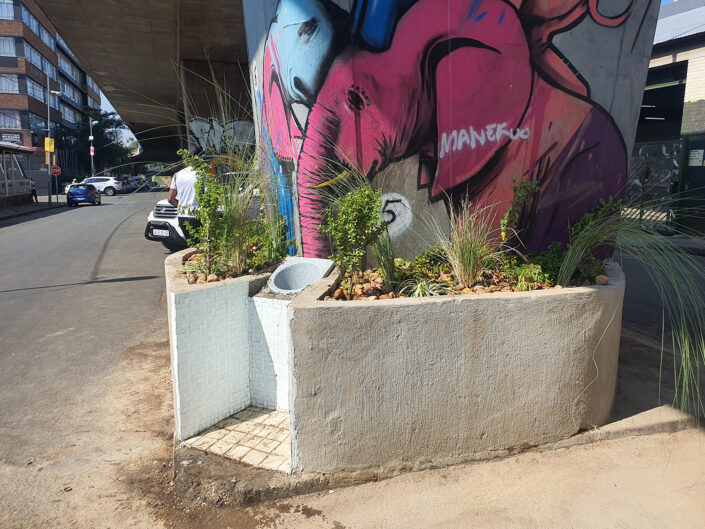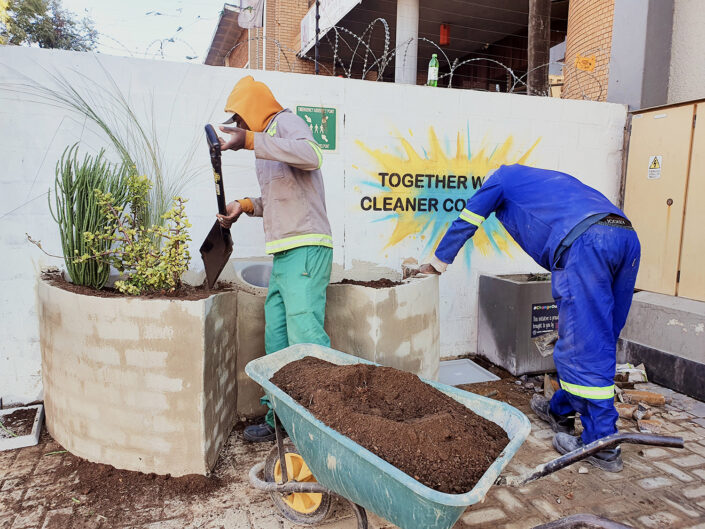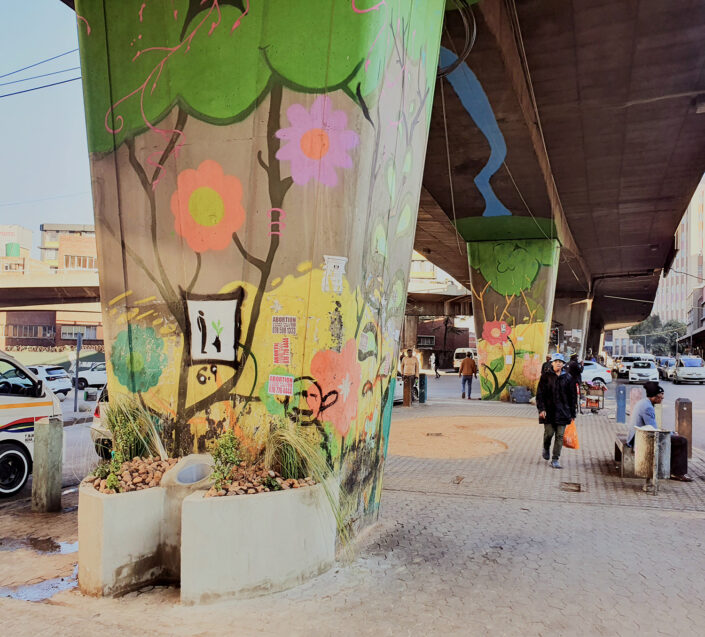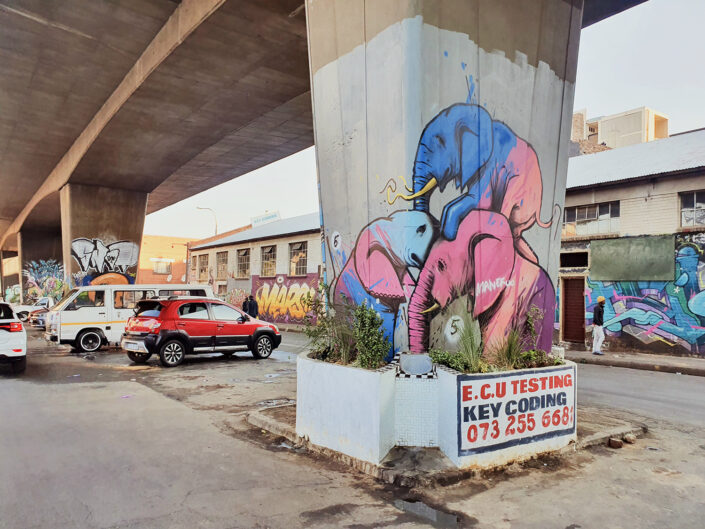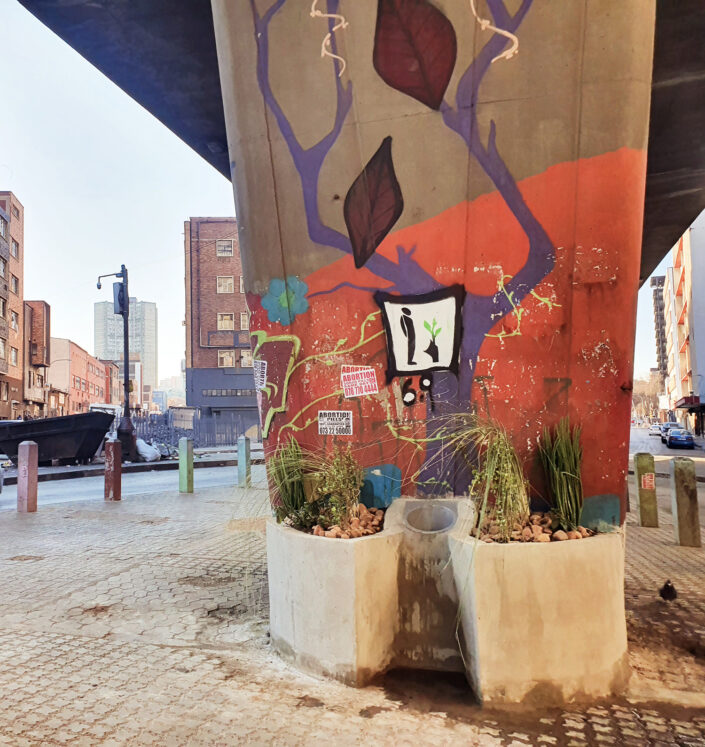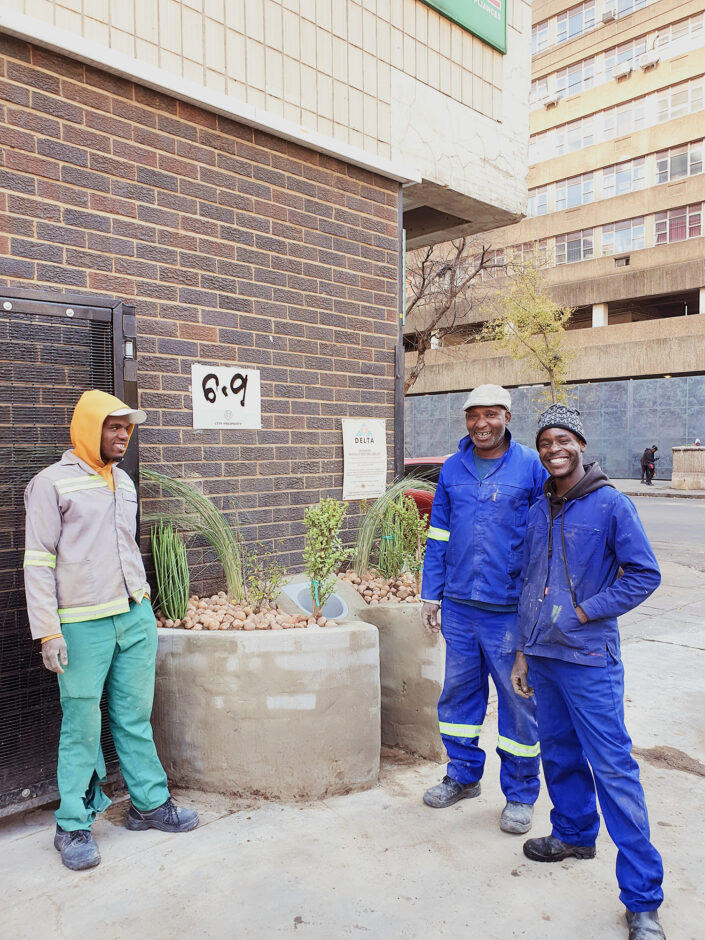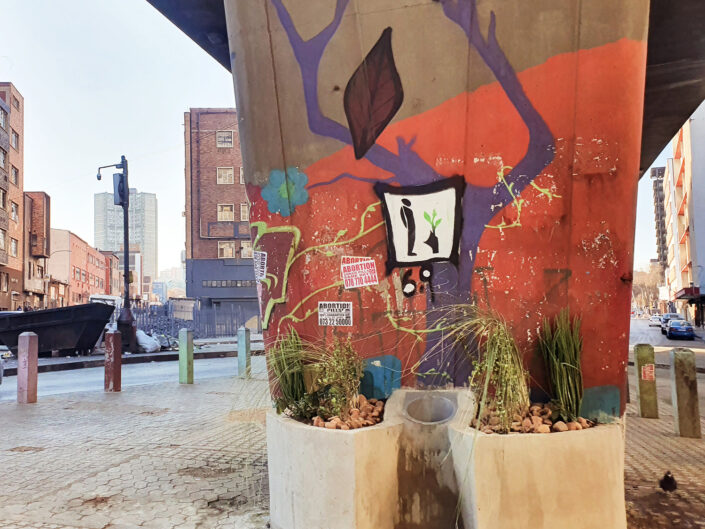The Plant Pee Pot
Imagine the frustration if you travel far for work every day, you are a taxi driver, or a Sixty60 delivery guy, and there are limited ablution facilities in the inner city, either because they were never built, they are locked, or because they are not maintained.
You will start reconsidering that morning cup of coffee, time your commute, or as a last resort relieve yourself against a wall with the most privacy you can find. Nobody wants to pee in public. Nobody wants to see people peeing in public. No building wants to have people peeing against it.
Along with many partners we have done the research and developed a nature-based solution to address this problem. We call it The Plant Pee Pot because one urinates in a pot plant. Microorganisms, AKA the goggas, then process the urine. The water feeds the plants. No connecting to the sewerage system. Apart from watering the plants, adding the goggas and keeping a general eye, nothing else is required.
The Plant Pee Pot...
Along with many partners we have done the research and developed a nature-based solution to address this problem. We call it The Plant Pee Pot because one urinates in a pot plant. Microorganisms, AKA the goggas, then process the urine. The water feeds the plants. No connecting to the sewerage system. Apart from watering the plants, adding the goggas and keeping a general eye, nothing else is required.
THE PILOT POTS
The first Plant Pee Pots were built and planted in mid-winter 2023. The plants persevered through a full growth season. What we found very encouraging is that only one plant was stolen and only one defecation had to be dealt with. Plus, when the drainage was slow, a higher dose of goggas and some plunging solved it within a few days.
THE REACTION
We have built more than a dozen now and every time we are on the street, we have people come up to us. Vulnerable people, taxi drivers, pedestrians, informal tradespeople all thank us for giving them dignity and privacy to relieve themselves.
Pots built in 2023
2024 UPDATES
THE FAUNA AND FLORA (aka the goggas and the plants)
The Clever Culture Club is a complimentary mix of microorganisms which grow up together in a lab. They act like a family and look out for other’s temperature and oxygen needs. Put together they are clever cultures that process the urine for the plants to absorb and reduce the stench when exposed to air. Plants which can absorb the urine were selected and its roots were elongated to reach the urine.
MAINTENANCE
If the pots are built or cast, the cement need to have a water repellent or rather urine repellent layer to improve the maintenance, longevity and aesthetics or the urinals. Glazed tiles are easier and neater to rinse daily in the long run.
Public infrastructure takes a beating in rough cities like Johannesburg. So, the plant pee pots need to be robust, and maintenance need to be done diligently like caring for a pot plant.
PUBLIC ART
One way to take these urinals to the next level, is through branding them with mosaic artworks. City property have just commissioned the first artwork. Watch this space.
Pots built in 2024
Partners in crime
COLLABORATORS
Dr Sashnee Searby, technical director from PDS.
University of Johannesburg PEETS Engineering and Industrial design contributions
Dr Kousar Hoorsak Water and Sanitation Engineer
Olawale Kukoyi, Environmental Engineering specialist
Gabriel Gibbons, Technical designer
Anya Erasmus, Industrial designer
University of the Witwatersrand
Plants Phytoremediation science
Prof. Isabel Weiersbye- Animal, Plant and Environmental Sciences
Donald Mcullum Wits Life Science Museum – Living Collections Curator
Lerato Maseko Plant Pee Pot load capacity study
Public Health
Prof. Nelesh Govender, Clinical Microbiology And Infectious Diseases,
Head of Centre at National Institute for Communicable Diseases (NICD)
Agronomy
Prof Mary Scholes, Animal, Plant and Environmental Sciences
Prof Sally Archibald, Animal, Plant and Environmental Sciences



